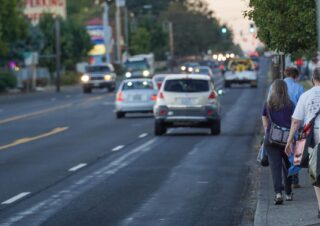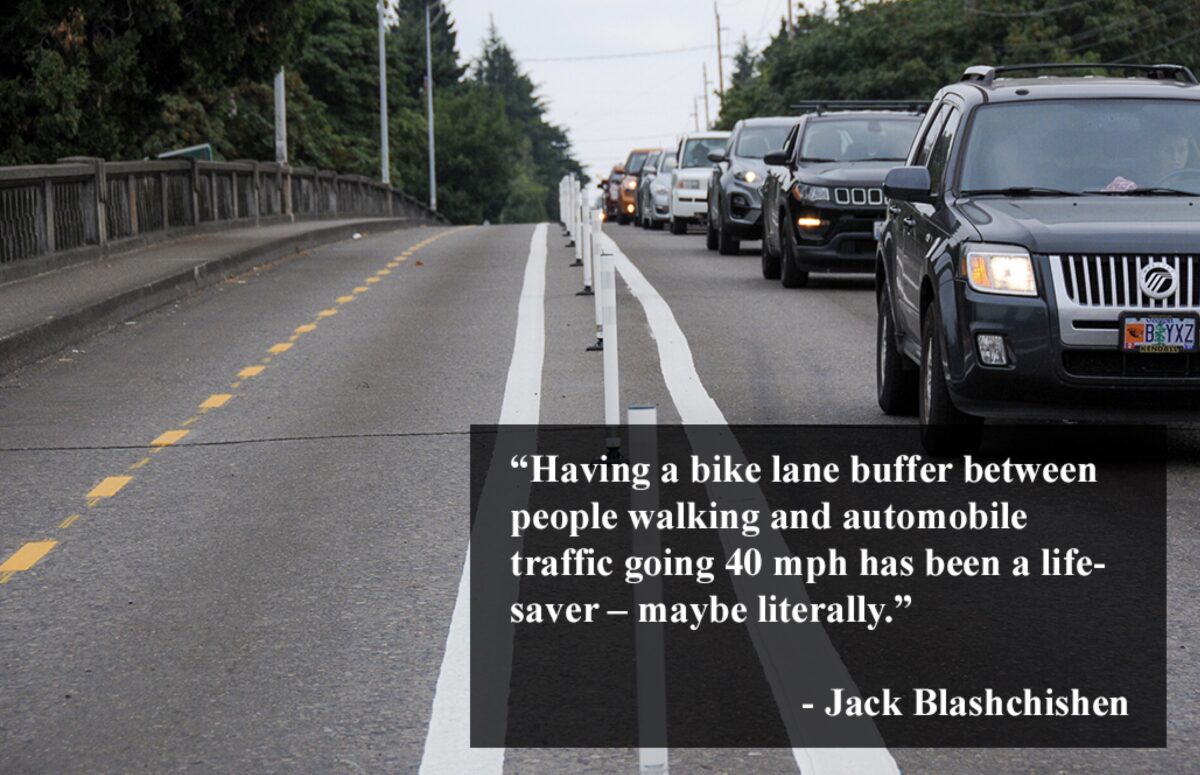
(Note: This article is written by Jack Blashchishen, a University of Oregon student who grew up Portland’s Parkrose neighborhood.
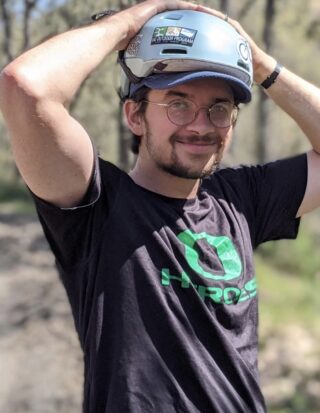
East Portland is home to some of the city’s most dangerous streets, and residents have been calling for better active transportation infrastructure for years. One group of people who have suffered from this poor infrastructure in east Portland are Slavic immigrants from the former Soviet Union, some of whom are required to walk on busy streets because of religious practice – but until recently, have had to take big safety risks in order to do so.
I am from this community. I grew up in the Parkrose neighborhood in east Portland, in a Russian-speaking community centered around the Church of Christians of Seventh Day located just off NE 102nd Avenue and I-84. This church has around 700 members, mostly from Uzbekistan, Ukraine, Moldova, and Russia.
One of the core tenets of the religion practiced at this church is to treat the Sabbath – every week from sundown on Friday to sundown on Saturday – as sacred. Driving is expressly forbidden on the Sabbath, so members of the church have to prioritize living close enough to walk there.
Advertisement
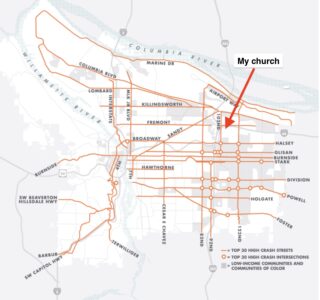
Every week, hundreds of people walk to the church, some who live within the relatively cozy Parkrose Heights neighborhood. Others travel farther and have to cross I-84 or I-205, with some people coming from as far south as Division Street and as far east as 136th Ave.
Some of these people are pushing strollers, some are elderly and many are children no more than three feet tall. Unfortunately, the streets in these neighborhoods are some of the most dangerous in Portland, with many lacking sidewalks or enough protection for people mere inches away from high-speed car traffic.
Although churches have had an enormous role in shaping cities in the past, serving as architectural monuments as well as gathering places and town centers, today they occupy a pretty small role in American cities. Rather than being neighborhood centers, they tend to conform to the built environment around them. This church is adjacent to I-84, a mere block away from an exit ramp, in a neighborhood without sidewalks.
Advertisement
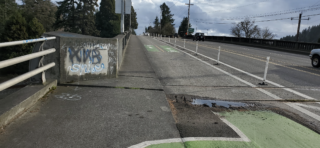
My childhood is full of memories of walking to church with my family along some of the most dangerous streets in Portland, often taking quite a long journey, passing around blind corners in the rain or at night. When my parents immigrated to Portland from Tashkent, Uzbekistan in 1998 when I was two years old, they moved to this area because it was the part of the city they could afford to live in, not because they wanted to live in an area with too few sidewalks and too many cars.
Bicycle infrastructure benefits pedestrians by creating buffers between us and car traffic.
Many of the streets these churchgoers travel on, including 102nd Ave, 122nd Ave, Halsey and Glisan Streets, are part of Portland’s High Crash Network. There were 258 total crashes on 102nd Ave, the street I traveled on to get to church, from 2012 to 2016, three of them fatal.
In recent years, the Portland Bureau of Transportation has put work into making east Portland safer for people walking. These projects have benefited people in my community by creating more distance between people’s bodies and fast-moving traffic, as well as slowing the traffic by removing automobile lanes and adding marked crossings. One project that has been particularly impactful has been the NE 102nd Ave Corridor Safety Project, which BikePortland looked at in detail in 2019.
Until the summer of 2019, NE 102nd Ave had seven vehicle lanes, two in either direction with a center median, as well as parking on both sides of the street in most places. There were no bike lanes and some sidewalk gaps. According to PBOT’s description of the street conditions prior to the safety project, three out of five cars drove faster than the speed limit of 35 mph, and one in four drove faster than 40 mph.
This project replaced a car lane with a two-way bike lane, which not only helps people biking but also benefits people walking on the narrow sidewalks on 102nd Ave – people like my family, who have had to cross I-84 using the bridge on 102nd to get to church. Bicycle infrastructure benefits pedestrians by creating buffers between us and car traffic, as well as slowing traffic down by narrowing the roadway. When I was eight years old, I lost my balance on the narrow sidewalk and stepped with one foot into the roadway. My parents could only watch as a truck zoomed by just a couple inches away from my body. Having a bike lane buffer between people walking and automobile traffic going 40 mph has been a lifesaver – maybe literally.
I feel lucky to survive growing up in east Portland because of the dangers on these streets. These projects make me feel more confident that the children walking to church with their parents today will be safer than I ever was.
— Jack Blashchishen


